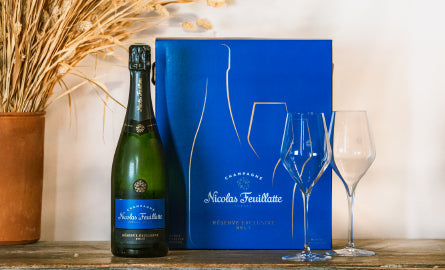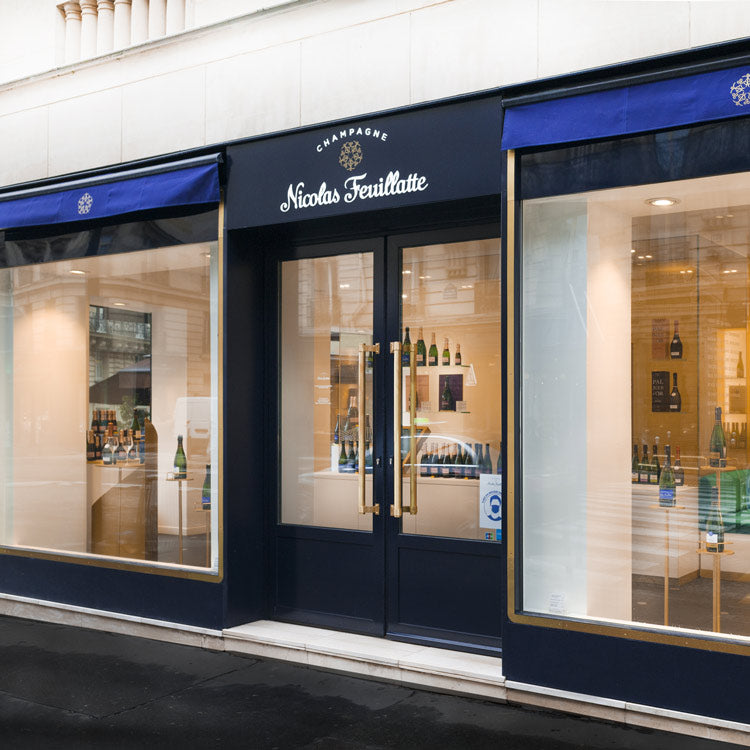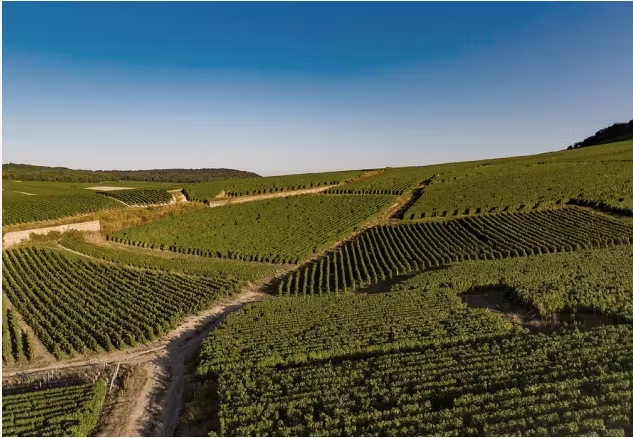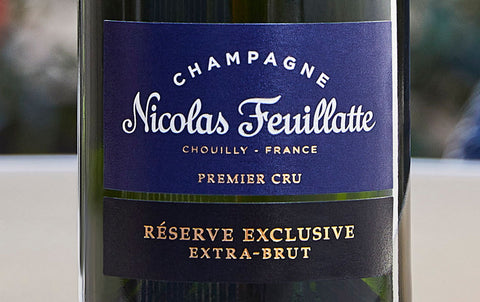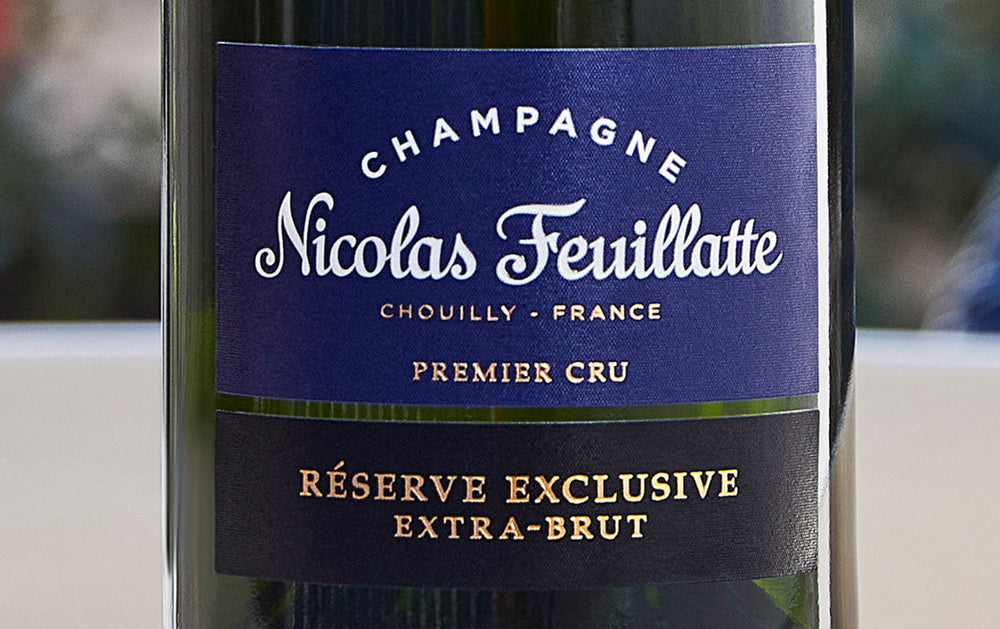Is differentiating Champagne and Crémant a matter for specialists? Not really. While these two sparkling wines share some real similarities, a few clues can reveal their true nature. Variety of geographical origin and therefore terroirs, production methods, grape varieties used... The differences between Champagne and Crémant are numerous. Despite everything, these sparkling wines appear complementary, and contrasting them would be a mistake. These two festive wines share common characteristics, as the use of the Champagne method for their production. So, no ostracism, Maison Nicolas Feuillatte is happy to share with you the specificities of these two wines, symbols of French culture.
Crémant vs Champagne: What are the differences?
What distinguishes Crémant from Champagne? First and foremost, there are three characteristics that each have a strong impact on the nature of these wines.
-
First, the geographical origin. Champagne only comes from a territorial area limited to the Champagne terroir. This obligation gave rise to the creation of an AOC (Appellation d'Origine Contrôlée). While Crémant is often associated with Bourgogne or Alsace, it can just as easily be produced in the Loire, Savoie and even Languedoc.
-
Another point is that the grape varieties used to elaborate those wines differ. There are mainly 3 grape varieties used in the production of Champagne: Chardonnay, Pinot Noir and Meunier. If other older grape varieties are used again by creative winemakers, it is mainly with those 3 types of vines that the famous Champagne wine is made. Lovers of fine bubbles shall choose the Champagne best suited to their palate.
As for Crémant, there are no regulations concerning a limitation of grape varieties, given its national or even international dimension. In addition to the three previously mentioned, we find, for example, Gamay for Crémants de Bourgogne and Riesling or Pinot Blanc for those from Alsace. Each territory uses local grape varieties, giving a unique touch to the production from 9 French regions.
-
Another difference between Champagne and Crémant: a nuance on the production method. All crémants are supposed to respect the specifications of the méthode champenoise (or traditional method). This involves a double fermentation, the second of which takes place in the bottle. Crémants generally respect this process, like the AOC Crémant d'Alsace. However, even if the method is the same, the aging time remains longer in the production of Champagne (15 months minimum compared to 9 for crémant).
-
It should also be noted that the harvesting method is different between the Champagne appellation and Crémants: in Champagne, there is only one way to harvest the grapes: by hand! During the harvest, nearly 120,000 harvesters work manually to ensure the integrity of the bunches. In practice, each bunch is picked by hand, using pruning shears, then delicately placed in a container which will then be poured into large crates. Each of these crates will then be transported to a pressing site (generally the closest to the picking site) in order to be - once again with great care - poured into the press. This manual aspect of the harvest is particularly important to take into account in the production cost (and therefore sale) of a bottle of champagne, and is one of the elements that make up the price per kilo of Champagne grapes. Other appellations, such as Crémant, Cava or Prosecco, allow harvesting using machines.

The specificities of Crémant: definition and characteristics
Crémant is a quality sparkling wine, produced in multiple regions of France and around the world. In France, it is mainly found in Alsace, Bourgogne or Loire. It is a sparkling wine, which is enjoyed in a festive setting. It is characterized by a light foam, which gave it its name. Originally, the term Crémant referred to bottles of Champagne distinguished by the lightness of their foam, more "creamy". The variety of its terroirs of origin makes a single taste definition difficult, the wines produced being distinguished by their respective grape varieties.
With the use of Chardonnay and Pinot Noir, Crémants de Bourgogne offer flavors close to those of a true Champagne. Crémants d'Alsace, perhaps the most renowned, are characterized more by their freshness, thanks to the contribution of Pinot Blanc. Crémants de Loire offer a complex aromatic palette, with very lively fruit notes.
Influence of Terroirs on Aromatic and Taste Profiles
The distinct terroirs of Champagne and Crémant-producing regions profoundly influence the aromatic and taste profiles of these sparkling wines.
-
Minerality of the Côte des Blancs : The chalky soils of this Champagne region give the wines purity and precision, with mineral notes and lively acidity. These characteristics are rare in crémants, which tend to be fruitier and less focused on minerality.
-
Fruity Crémants d'Alsace : In Alsace, the diverse soils and aromatic grape varieties produce crémants with expressive aromas of fruit and flowers. This aromatic richness is less common in champagnes, which emphasize complexity and finesse.
-
Robustness of the Montagne de Reims : Champagnes from this region are full-bodied and complex, often with aromas of red fruits and spicy notes. This robustness is less common in crémants, which often favor more delicate and accessible profiles.
-
Delicacy of Crémants de Bourgogne : Crémants from this region are distinguished by their finesse and elegance, with subtle aromas and a light structure. This delicacy contrasts with some more powerful and structured champagnes, particularly those from the Montagne de Reims.
In conclusion, although Champagne and Crémant share similar production methods, their respective terroirs play a crucial role in their distinct aromatic and taste profiles.
Crémant or Champagne: for which occasion?
Crémant vs Champagne, how to choose? A beautiful tasting for every situation! While these two wines sometimes seem like competitors, they can also be considered complementary. There's no need to definitively choose between these two wines that symbolize French culture.
Whether you are a fan of sparkling wines rich in minerality or fruity and delicate vintages, champagnes and crémants offer a diversity of flavors that will seduce all palates.
To discover these differences for yourself, explore our online selection and enjoy fast and free delivery for all orders of €150 or more on Nicolas-Feuillatte.com.


